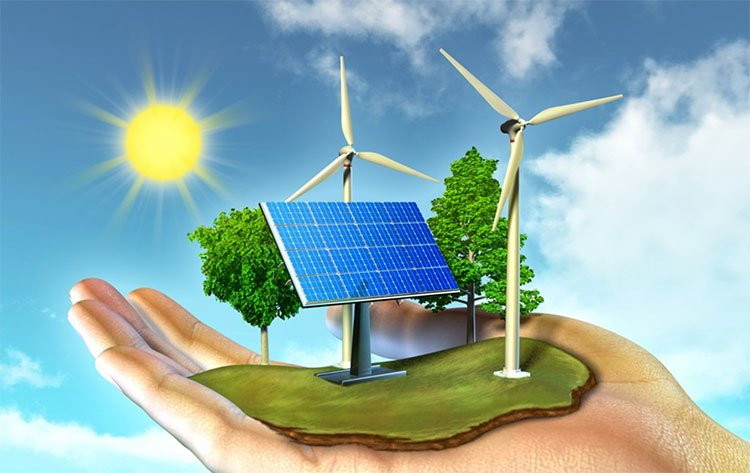November 22-23, 2025
Johannesburg, South Africa
_____________________________________________________________
Author/s
- Prof. Syed Munir Khasru Chairman, Institute for Policy, Advocacy and Governance (IPAG)
- Riad Meddeb Director, Sustainable Energy Hub, UNDP, (United States)
- Hans Olav Ibrekk Special Envoy for Climate and Security, Ministry of Foreign Affairs, (Norway)
- Dr Gauri Singh Deputy Director General, International Renewable Energy Agency (IRENA), (United Arab Emirates)
- Dr Vibha Dhawan Director General, The Energy and Resources Institute (TERI), (India)
- Prof. Michael Weisberg University of Pennsylvania, (United States)
- Heather Henriksen Chief Sustainability Officer, Harvard Office for Sustainability, (United States)
- Prof. Hunt Allcott Global Environmental Policy, Stanford University & Senior Fellow, Stanford Institute for Economic Policy Research (SIEPR), (United States)
- Preeti Pandya Senior Research Associate, IPAG India, (India)
_________________________________________________
Abstract
The global energy landscape presents stark contrasts between aspiration and reality. While international agreements champion clean energy access for all, nearly 900 million people worldwide lack basic electricity, with millions more suffering from unreliable and costly power supplies. This policy brief examines how G20 nations can lead the implementation of SDG7 (Affordable and Clean Energy) through best practices that ensure a just energy transition – one that balances environmental imperatives with economic development and social equity. Drawing from cases in Brazil, Vietnam, India, and Mexico, we identify actionable strategies that the G20 can implement to advance energy justice while addressing global inequalities. This brief emphasises that successful implementation requires not only technology and financing but also inclusive governance systems that centre the voices of historically SUB marginalised communities in decision-making processes.
Diagnosis
The paradox of modern energy systems is painfully visible in rural communities across Latin America, sub-Saharan Africa, Asia, and the Pacific Islands where, despite abundant renewable resources, families continue to rely on polluting fuels for basic energy needs. This scene repeats across the developing world, where energy poverty1 persists alongside climate vulnerability. Energy poverty affects over 1.18 billion people globally, significantly exceeding the 733 million without electricity access in 2020. Beyond mere connection, energy poverty means lacking reliable, affordable energy for essential daily activities. Even in electrified areas, inconsistent access prevents people from experiencing electricity’s full economic and welfare benefits. The challenge is multifaceted: while developed economies must rapidly decarbonise, emerging economies face the dual burden of expanding energy access while reducing emissions. The top 10 emitter countries generate over two-thirds of global emissions, yet the consequences are universal. A recent study reveals that existing atmospheric emissions could slash global GDP per capita by up to 29% by 2050, with the most severe impacts devastating vulnerable populations. This inequity highlights the disproportionate responsibility large emitters bear and must be emphasised. Historical responsibility must be acknowledged in global climate finance mechanisms, with industrialised nations contributing proportionally to their cumulative emissions, not only current output.
The just energy transition must also be addressed globally, not just nationally. Actions such as the US Inflation Reduction Act and the EU’s Carbon Border Adjustment Mechanism risk negatively affecting developing countries. Global coordination is essential to ensure one country’s transition does not hinder another’s. Moreover, trade policies that claim environmental objectives must be scrutinised to prevent green protectionism that disadvantages emerging economies. The G20 should establish regular assessment mechanisms to evaluate the cross-border impacts of national climate policies.
The concept of a “just energy transition” recognises that the shift to clean energy must not leave vulnerable populations behind. In practice, this means ensuring that the benefits and costs of
transitioning to renewable energy are distributed equitably, with particular attention to communities historically dependent on fossil fuel industries and those currently lacking energy access. India exemplifies this complex challenge. Despite ambitious renewable energy targets and impressive growth in solar capacity, coal still powers over 70% of its electrical grid. The economic, social, and political barriers to rapid transition remain formidable, particularly when balancing development needs with climate commitments. Additionally, India’s experience highlights the need for tailored transition pathways that account for each country’s unique resource endowments, socio-economic conditions, and development priorities rather than adopting one-size-fits-all approaches.
Case studies: Divergent paths, common challenges
Brazil’s energy transition reflects progress and challenges in renewable adoption. While nearly 85% of Brazil’s electricity comes from hydropower, climate change-induced droughts have exposed vulnerabilities. The country’s biofuel programme has reduced petroleum dependence in transportation, creating over 800 000 jobs and cutting carbon emissions,9 although land use competition with food production and biodiversity remain concerns. Efforts to expand solar and wind face grid integration challenges and require significant infrastructure investment. Brazil’s experience underscores the importance of diversifying renewable energy sources beyond hydropower to build climate resilience and ensure energy security in the face of changing weather patterns.
Indonesia,10 the world’s largest coal exporter, is striving to achieve 23% renewable energy by 2025. Its unique geography, with over 17 000 islands, complicates electricity access. Decentralised solutions, like solar microgrids, show promise, with Lombok Island achieving 100% rural electrification, 25% cost savings, and a 22% CO2 reduction. However, regulatory barriers, grid limitations, and financing hurdles remain. The National Energy Policy and supporting regulations have enabled independent power producers to partner with local governments under renewable energy targets, albeit slowly due to bureaucratic delays. Indonesia shows how decentralised renewable solutions can leapfrog traditional grid infrastructure in geographically challenging regions. This provides valuable lessons for archipelagic and mountainous countries seeking universal energy access.
China, the largest carbon emitter and renewable energy investor globally, invested $380 billion in clean energy in 2023, leading in renewable capacity growth. However, issues around supply chain dominance and the environmental impact of renewable technology manufacturing complicate global energy politics and energy justice. China’s dual role as both the world’s largest emitter and its renewable energy leader highlights the need for balanced approaches that acknowledge progress while continuing to push for higher climate ambition from major economies.
Vietnam’s rooftop solar surged to 9GW in two years through strong policies and incentives. Key to this growth was the introduction of attractive feed-in tariffs, simplified connection procedures, and waivers on land acquisition approvals. The government also mandated power utilities to buy rooftop solar, boosting investor confidence. This rapid solar expansion shows how well-designed policy incentives can trigger exponential private investment in renewables, although the experience also reveals the importance of grid readiness and regulatory stability for sustainable growth.
Mongolia’s wind energy projects like Salkhit showcase successful public–private collaboration and job creation. Salkhit was financed through multilateral development banks and involved transparent bidding processes that included capacity building for local technicians. These strategies highlight scalable models for emerging economies. Mongolia’s approach shows how countries with vast renewable resources but limited domestic capital can leverage international finance while prioritising local capacity building and employment generation.
Recommendations
Four pillars for G20 leadership
Drawing on these diverse experiences, we propose four interconnected pillars12 for G20 leadership in advancing just energy transitions globally:
Expanded and equitable financing mechanisms: The clean energy financing gap in emerging economies requires solutions beyond traditional aid. Just energy transition partnerships (JETPs) offer a promising model, blending concessional funding with policy support. However, current JETP commitments to South Africa, Indonesia, and Vietnam are under $30 billion – far below global needs. G20 countries provided at least $1 trillion in fossil fuel subsidies in 2022. From 2010 to 2022, merely 32% of these countries reduced subsidies relative to GDP.This persistent financial support creates a substantial barrier to renewable energy development and underscores the critical need for fossil fuel subsidy reform to redirect investments toward sustainable energy solutions. G20 nations must expand these mechanisms, aligning them with recipient country priorities.
The G20 is a critical bridge between aid providers and recipients, uniquely positioned to address global economic disparities. By facilitating dialogue, the forum can help direct capital to the Global South at competitive rates, promote inclusive international governance reforms, and ensure the priorities of developing nations are heard in high-level political discussions. Blended finance approaches, leveraging public funds to attract private investment, can be effective, especially when paired with risk-reduction tools tailored to emerging markets.20 Scaling innovative energy approaches could save up to $50 trillion by 2050 and reduce the clean energy investment gap by over 25%. Achieving this potential requires robust global cooperation, seamlessly linking national reforms, international finance, and coordinated political leadership.21 Additionally, G20 members should create a specialised finance facility to support earlystage clean energy projects in developing countries, addressing the critical gap between concept development and bankable project status that often prevents promising solutions from reaching implementation
Collaborative technology-sharing platforms Technology transfer is a key barrier to global energy transitions. G20 nations should establish platforms for sharing expertise in solar, wind, battery
storage, and grid management, fostering North–South and South– South exchanges. Innovations from developing economies should be prioritised, with technologies adapted to local conditions,
infrastructure, and workforce capabilities. Collaborative R&D efforts aimed at cost reduction and improved reliability can further accelerate renewable energy deployment.
Advances in data analysis, AI, and the Internet of Things should be leveraged to enhance mapping, planning, decision-making, and the mobilisation of investments in the energy sector of developing
countries. Furthermore, these platforms should include provisions for open-source clean energy technologies that can be freely adapted and deployed in least-developed countries, breaking
dependence on proprietary solutions that may be cost-prohibitive for the most vulnerable regions.
Scaling community-led energy solutions: Centralised systems alone cannot eliminate energy poverty, especially in remote areas. Peru’s rural electrification approach, which has combined grid extension with solar home systems in Andean and Amazonian regions, demonstrates adaptability to diverse geographical challenges. Similarly, Bangladesh’s solar home system programme, which has provided electricity to over 20 million people through microfinance and community engagement, demonstrates the power of local solutions. G20 nations should support similar initiatives by strengthening energy cooperatives, training local technicians, and establishing regulatory frameworks for decentralised generation and distribution, ensuring communities play an active role in their energy transitions. At the same time, gender perspectives should be mainstreamed in energy policies and programmes, particularly at community level, to drive socio-economic transformation and tackle energy poverty.23 Beyond gender, G20 nations should promote inclusive energy governance models that incorporate Indigenous knowledge systems and establish formal consultation mechanisms for marginalised communities to influence energy planning processes from inception to implementation.
Sustainable supply chain development: The clean energy transition relies on critical minerals and manufacturing, currently concentrated in a few countries. G20 nations should diversify supply chains while upholding environmental and labour standards, to reduce geopolitical risks, ensure resilience, and promote fair labour and environmental practices. The G20 can incentivise cooperation from dominant players through trade policies, financial incentives, and coordinated governance. This includes supporting sustainable mining in resource-rich developing nations, investing in recycling and circular economy solutions, and implementing trade policies that prevent exploitation while enabling technology diffusion. Additionally, G20 nations should establish an international certification system for ethically and sustainably sourced minerals needed for clean energy technologies, providing market incentives for responsible practices throughout the supply chain and supporting alternative material research to reduce dependency on scarce resources.
Implementation roadmap
To translate principles into action, G20 nations should implement a phased approach. In the immediate term (2025–2026), stakeholders must double JETP funding, streamline access procedures, and conduct a comprehensive mapping of technologysharing initiatives to identify gaps and opportunities. Beyond JETPs, this commitment should expand to broader access to affordable blended financing and de-risking mechanisms.
Multilateral and bilateral financial institutions can play a crucial role in mobilising diverse funding sources, including governments, donors, private sector investments, and climate funds. The immediate term should also include establishing standardised reporting frameworks for tracking the socio-economic impacts of energy transitions, ensuring transparent assessment of both benefits and costs across different population segments.
Moving into the medium term (2027–2030), efforts should focus on developing standardised yet adaptable frameworks for community energy projects that accommodate diverse contexts. Establishing regional centres of excellence for renewable energy technology adaptation and workforce development will be essential, alongside implementing preferential trade provisions for sustainable energy goods and services, particularly benefitting least developed countries. This period should also prioritise creating formal job transition pathways for fossil fuel workers, including dedicated retraining programmes, relocation assistance, and early retirement options for workers in declining sectors who cannot reasonably transition to new industries.
In the long term (2031–2035), G20 nations should create integrated financing mechanisms that link climate mitigation, adaptation, and development objectives. Strengthening supply chains by ensuring renewable technology manufacturing is distributed across regions will enhance resilience and diversity. Achieving universal energy access through a combination of grid extension and decentralised solutions should be a top priority, ensuring a just and sustainable energy transition for all. This must include transforming energy governance systems to permanently institutionalise participation from traditionally excluded stakeholders, including establishing energy democracy mechanisms that give consumers and communities greater control over energy production and distribution.
Conclusion: From competition to collaboration
The just energy transition presents both challenges and opportunities for the G20, encompassing economic justice, climate resilience, and geopolitical stability. By focusing on financing, technology, community engagement, and supply chains, G20 nations can shift from competition to collaboration. Examples from Papua New Guinea and Vietnam show progress is possible with the right policies. The G20, with its diverse perspectives, can lead the global shift towards clean energy, reducing global inequalities and ensuring access to clean energy for all, regardless of geography or economic status. Success will require moving beyond siloed approaches to create holistic policy frameworks that recognise the interconnections between energy access, climate action, economic development, and social justice. By embracing these principles, G20 nations can transform the energy transition from a technical challenge into a powerful catalyst for more equitable and sustainable global development.
Link https://t20southafrica.org/wp-content/uploads/2025/09/T20_PB-5_SDG7-Just-Transition.pdf


